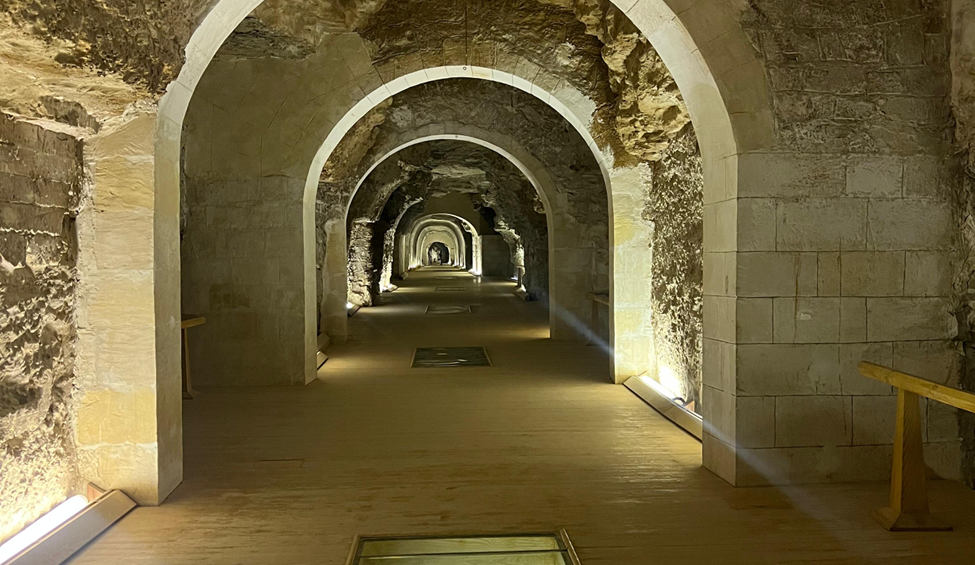The Necropolises of Saqqara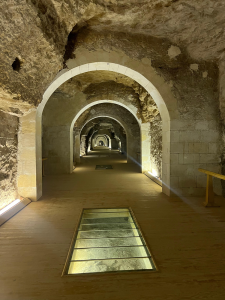
First: The Sacred Animal Cemeteries
The Serapeum
The ancient Egyptians revered animals from the earliest times, driven by either awe and fear of creatures like crocodiles and lionesses, or by affection for those that assisted them, such as cows, dogs, cats, and rams. The sacred bull, Apis, was the most revered animal in ancient Egypt. It was considered a symbol of the god of agriculture and fertility, Osiris. The worship of the bull was particularly prominent in Memphis, the capital of the Old Kingdom. During the New Kingdom, cemeteries dedicated to the burial of Apis bulls gained widespread popularity. The veneration of the Apis bull flourished due to the great wealth Egypt acquired during the New Kingdom. The sacred Apis bull was selected through a process known only to the priests, and it was offered sacrifices. Upon the death of the sacred bull, it was mummified and buried, and a replacement was quickly chosen. During the Ptolemaic period, Ptolemy I sought to unify Egyptian and Greek religions. A new god, Serapis, was created, combining the attributes of the Greek god Zeus and the Egyptian god Osiris. The representation of Serapis was a man with a beard (symbolizing Zeus) and the body of a bull (symbolizing the Apis bull, a representation of Osiris). The burial place of animals in Saqqara was named the Serapeum in honor of the god Serapis. It was the custom of the Egyptians, from the earliest times (3000 BC) until the Roman era (642 BC – 30 BC), to seek blessings from the sacred bull (Apis) and to make pilgrimages to it, and their wishes would be fulfilled. Therefore, it became of great sanctity and importance to them. When the Persians occupied Egypt (525 BC), during the reign of Cambyses, they despised the bull (Apis) and even killed the sacred bull (Apis) in 525 BC. For this reason, the Egyptians completely hated them. The Greeks and Romans, on the other hand, were unlike the Persians. Even the Roman emperors, such as Hadrian, Trajan, and Tiberius, when they came to Egypt, would ensure that the celebration of the Apis bull continued. The French archaeologist Mariette discovered in 1860 the largest and most massive tomb in Saqqara, which became known as the Serapeum, for the bull Apis. In this place, more than 60 bulls were found, spanning over 1400 years. Around the Serapeum, a collection of votive tablets was found, which shows us that the rulers used to come specifically to this place and make vows and offer sacrifices for purposes of childbirth, marriage, procreation, and infertility. In this place (around the Serapeum), a group of votive tablets were found, which show us that the rulers used to come specifically to this place and make vows and offer sacrifices for purposes of childbirth, marriage, procreation, and infertility. The construction of the animal cemetery (for the Apis bull) in Saqqara began under King Amenhotep III during the New Kingdom, 18th dynasty, around 1400 BC. The construction continued throughout the ages, especially during the New Kingdom and the Ptolemaic period. In the tomb, many stone sarcophagi were found, in which the sacred bull was buried. They were extremely large, and one wonders how these huge sarcophagi were brought into this place? What a miracle the ancient Egyptians performed in these amazing burials that are almost unbelievable?”
Scenes for The Serapeum
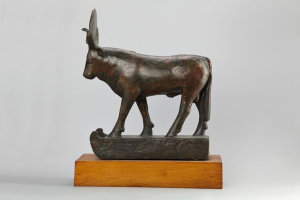 the statue of bull Apis
the statue of bull Apis
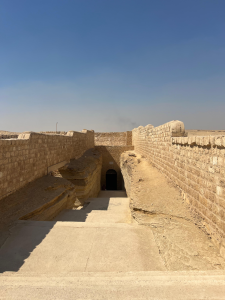 The entrance of The Serapeum
The entrance of The Serapeum
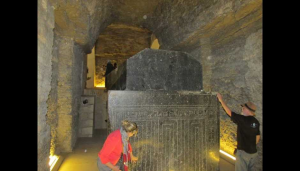 Sarcophagus of the sacred bull Apis
Sarcophagus of the sacred bull Apis
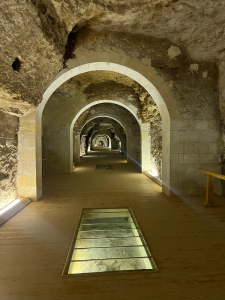 Corridors of the Serapeum in Saqqara
Corridors of the Serapeum in Saqqara
 Semi-circular platform in front of the Serapeum temple It contains eleven life-size statues of Greek poets and philosophers.
Semi-circular platform in front of the Serapeum temple It contains eleven life-size statues of Greek poets and philosophers.
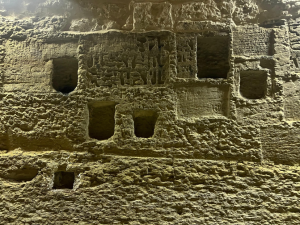
Tombs of the Nobility in Saqqara
The nobility and high-ranking officials (the king’s entourage, ministers, and military commanders) were always closely associated with the ruling king. Wherever the king’s tomb or pyramid was located, they were allowed to build their tombs nearby. In ancient Egyptian belief, the king was the son of a god, thus giving his tomb or pyramid great religious sanctity in addition to its worldly importance. It was customary for ancient Egyptians to construct their tombs during their lifetime. Inside these tombs, they would be depicted engaged in their worldly activities, which they believed would continue in the afterlife. The tombs of the nobility often contained not only religious scenes to appease the gods and kings but also secular scenes depicting the tomb owner’s daily activities, such as hunting, fishing, and farming. The tombs of Saqqara have revealed the earliest known depictions of everyday life in ancient Egypt, dating back to the Old Kingdom (around 2500 BC) From the 3rd to the 6th dynasties, the tombs in Saqqara were characterized by the phenomenon of the false door. Scholars believe these false doors were either intended to mislead thieves about the location of statues or to allow the Alka (spirit) of the deceased to enter and exit the tomb. Important tombs of the nobility found in Saqqara include those of Mereruka, Kagemni, Ankh-ma-hor, and Nekau-asisi.
The Tomb of Mereruka
It was customary during the Old Kingdom for high-ranking officials to marry into the royal family. We find that Mereruka, from the 6th dynasty, married a daughter of King Teti, one of the kings of the 6th dynasty. For this reason, we find his tomb consisting of a number of rooms that reflect his wealth and influence. Mereruka’s position was as a vizier to King Teti, and he held many titles indicating his status and influence. He married Uatet-khat hor, the eldest daughter of King Teti. The tomb of Mereruka is considered the most beautiful tomb in the Saqqara region and is like a book that presents us with the most beautiful scenes of everyday life in ancient Egypt. The tomb reveals the increasing influence of high-ranking officials in the 6th dynasty, which led to the fall of the Old Kingdom.
Description of the Tomb
The tomb consisted of more than 30 rooms because it was a family tomb that included Mereruka, his wife, and his son “Mery’’. It includes six chambers for his wife and five chambers for his son Meri.
Important Scenes in the Tomb: –
• herding cattle
• Hunting hippos
• hunting birds and fish
• feeding animals
• A unique scene of feeding hyenas
• A wonderful scene depicting the embodiment of the three seasons of the year according to the ancient Egyptian calendar.
• A representing the papyrus marsh
• A scene of a common hippopotamus devouring a crocodile
• representing the administration of Mereruka’s estate various administrative tasks.
• Depicting Mereruka at an advanced age, being led by his sons.
• A scene of Mereruka and his wife playing the game of senet
The Tomb Facade
This tomb is distinguished from all other tombs by the presence of a scene depicting Mereruka sitting with his eye dangling from his shoulder in front of a painting.
The False Door
The tomb contains a false door, which is a representation of the idea of the Alka entering and exiting the tomb. A statue depicts a person, representing the deceased, as if stepping out of the door to take the offerings arranged on an offering table placed in front of him. For the first time, we found a deceased person who is not a king has a life-size statue. This demonstrates the influence of Mereruka
Important Scenes in the Tomb
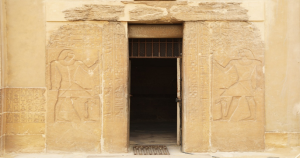 A scene depicting Mereruka on both sides of the tomb entrance
A scene depicting Mereruka on both sides of the tomb entrance
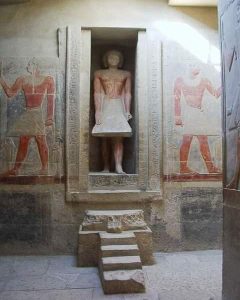 The statue of the deceased emerging from the false door to receive offerings
The statue of the deceased emerging from the false door to receive offerings
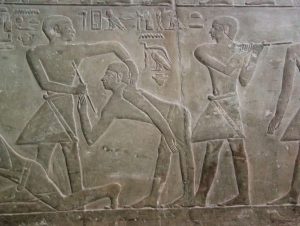 A scene depicting the punishment of a person for committing a mistake
A scene depicting the punishment of a person for committing a mistake
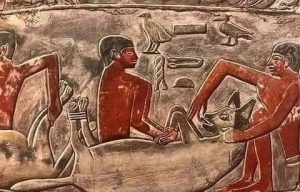 A unique scene depicting the feeding of hyenas
A unique scene depicting the feeding of hyenas
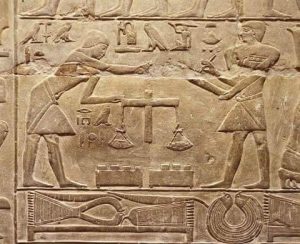 A scene depicting the administration of Mereruka’s estate
A scene depicting the administration of Mereruka’s estate
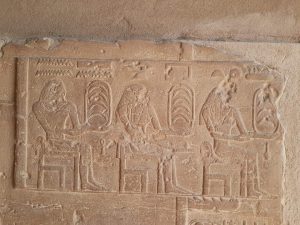 A scene depicting the representation of the three seasons according to the ancient Egyptian calendar
A scene depicting the representation of the three seasons according to the ancient Egyptian calendar
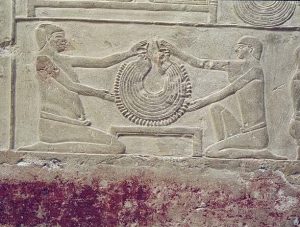 A scene depicting artisans creating necklaces
A scene depicting artisans creating necklaces
 A scene depicting workers smelting gold
A scene depicting workers smelting gold
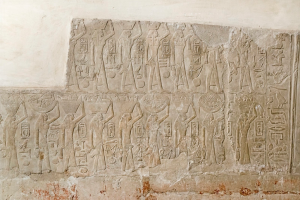 A scene depicting bearers of offerings
A scene depicting bearers of offerings
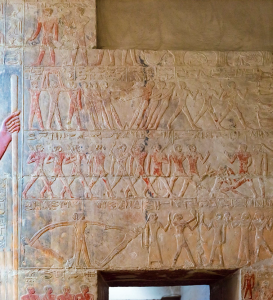 A scene depicting sports and games in ancient Egypt
A scene depicting sports and games in ancient Egypt
 A scene of fishing
A scene of fishing
The Tomb of Kagemni
Kagemni was known as “Mimi” and was a man of high rank. He held the position of vizier at the beginning of the reign of King Teti, the first king of the Sixth Dynasty. He married a princess named “Nebti-neb-khat.” Kagemni was a vizier and judge during the reigns of three consecutive kings of the Sixth Dynasty. Some of his titles “the overseer of the city of Teti’s pyramid” and “inspector of the pyramid Prophets.” His tomb is located near the pyramid of Teti in the necropolis of Saqqara, and east of the tomb of Mereruka. The tomb was discovered in 1899 AD. it consists of seven chambers. And has more than 60 scenes.
Important Scenes in the Tomb:
fishing with baskets and nets in swamps. Depiction of Kagemni standing and sitting. hunting birds like geese and ducks, as well as hunting other animals. Scenes representing the daily activities of the tomb owner. feeding hyenas and bulls. Depicting of bearers carrying various offerings of fruits and birds. showing workers measuring grain. There is a false door in the tomb bearing the titles of the deceased.
Important Scenes in the Tomb
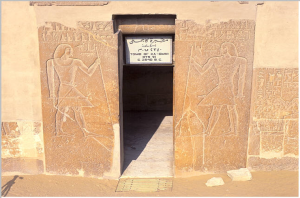 A scene depicting Kagemni at the tomb entrance
A scene depicting Kagemni at the tomb entrance
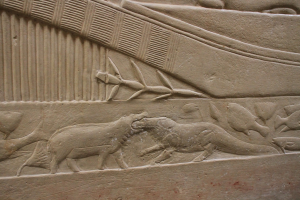 A scene depicting a battle between a hippopotamus and a crocodile
A scene depicting a battle between a hippopotamus and a crocodile
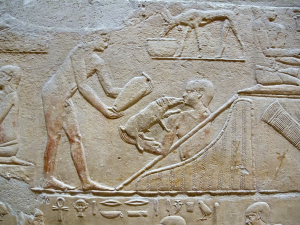 A scene depicting a herd of bulls crossing a waterway
A scene depicting a herd of bulls crossing a waterway
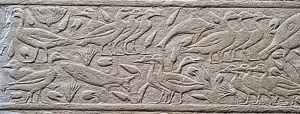 A scene depicting a lake with geese and ducks
A scene depicting a lake with geese and ducks
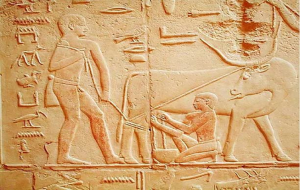 A scene depicting a worker milking a cow
A scene depicting a worker milking a cow
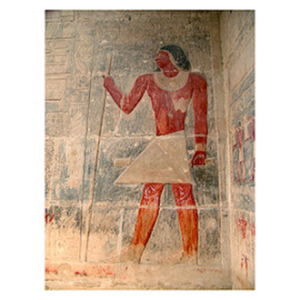 A scene depicting Kagemni in a standing position.
A scene depicting Kagemni in a standing position.

